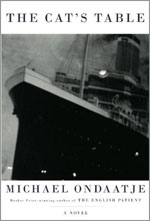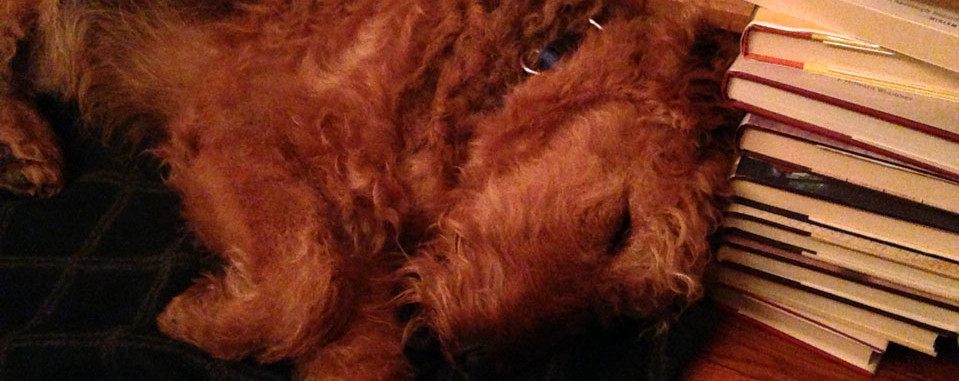
None of the multiple meanings of “the cat’s table” suggest positions in the room, in the world or in life that hold particular esteem or prestige. However, all meanings hint that secretly (or perhaps not-so-secretly!) that’s where we know we’ll gain the most insights, meet the most interesting characters and have the most fun. Certainly, it’s a reverse, perverse privileged position and where you want to be to embark on the latest adventure in storytelling spearheaded by the incomparable Michael Ondaatje.
In sea voyaging parlance, the cat’s table is the polar opposite of the coveted and perhaps ostentatious Captain’s Table, where anyone who aspires to be anyone wants to be and be seen amongst passengers on a cruise, in company of the head of the vessel and voyage. The cat’s table is the humble dining spot for those lowly passengers – maybe not affluent, influential or glamorous, likely young, often carrying some kind of social stigma – with whom no one else is interested in keeping company.
The German expression “Katzentisch” (quite literally “cat’s table”) was also a small low table at which well-heeled people fed their cats or small dogs. (1) Such a table was situated in the dining room, but in a corner away from the dining table. Again, it connotes something at a remove, although perhaps it was a somewhat more exalted position for an actual cat to be at a cat’s table than a human being.
Finally, the cat’s table was and is synonymous with the kids’ table, a dining room tradition still common today at family holiday gatherings, where children are seated at a table separate from and often shorter, humbler and featuring only an abbreviated dining selection from that of the grand dining furniture and repast of the adults. It’s considered a rite of passage and maturity to move up to the adults’ table. At the same time, the most fun, mayhem and mischief can be found and is tolerated at the kids’ table. Notably, adults who join the kids’ table are often remembered most fondly (that would be game-for-anything Uncle John in our family) and are clearly most able to throw aside inhibitions and prejudices to hang with the truly most entertaining crowd.
Ondaatje’s young protagonist, Michael, encounters the cat’s table in almost all of these forms during the course of an eventful ocean voyage in the 1950s. Shunted for not fully articulated or understood reasons from his family in Ceylon to his mother awaiting him in England, 11-year-old Michael balances the freedom of a comparatively unsupervised (except for perfunctory check-ins with a couple of ostensible but largely indifferent guardians) three-week adventure on an ocean liner with feelings of rootlessness, disconnection, loneliness and disaffection in the intriguing, bustling and highly socially stratified of that closed world. Michael finds his niche in that world fairly quickly, and perceptively and precociously assesses its hidden worth: while the Captain’s Table was where self-important people puffed up their dubious significance, the truly worthy people and experiences were at the polar opposite of the dining hall and the social spectrum.
Or is young Michael precocious? While The Cat’s Table shimmers with the freshness of a child’s wide-eyed and openhearted perspective, it is filtered through the sophistication and acquired emotional agendas and baggage of an adult, and is also reframed through the eyes and ears of poets – both Michael the protagonist’s eventual vocation and, of course, Michael Ondaatje’s. At times, it isn’t clear if a given episode or its interpretation is that of the child, the adult or the imaginative artist weaving it all in a new fashion. That’s both part of The Cat’s Table mystery and charm, and sometimes a very minor source of disorientation, possibly germane to a story where both the child and the adult might not entirely know what was going on.
Michael’s alliance with two young fellow passengers, Ramadhin and Cassius, seems initially to be one of convenience, not allegiance. That is, the three boys are handy partners in crime and backups, and egg each other on getting into the varieties of tempting mischief unfettered and parent-less children can get into from the engine rooms to the decks to the staterooms of a largely and surprisingly unprotected environment. As their adventures unfold and the three boys navigate this realm of no parents, lost parents, surrogate parents, and various broken, reconstituted and newly realized families, they come to mean a great deal to each other, which Michael much more fully appreciates as an adult.
The Cat’s Table would have been enchanting as just a series of character sketches and picaresque vignettes, culminating in an affecting reassessment as an adult of the connections made as a child. That a genuine mystery emerges during that short but momentous voyage – gravitating around a menacing, shackled prisoner who is only let out under highly and unusually protected conditions at night – is a splendid, intriguing bonus.
If The Cat’s Table is not Ondaatje’s best novel yet (oh, but I think it is …), it is certainly his most straightforwardly told and emotionally accessible story. It’s a yearning tribute with an almost fairytale-like aura to the memories of awe that pervade our dreams (and nightmares and fears), and the memories of sometimes unlikely affiliation and love and what we mistake as love that pervade and haunt our hearts, guide us or sometimes lead us astray.
Notes
1. Definition of Katzentisch
http://www.katzentisch.com/2009/07/what-is-katzentisch.html
Thank you to the Alfred A. Knopf representative at the June, 2011 American Library Association Conference and Exhibit, who provided a U.S. advance reader’s edition of The Cat’s Table, by Michael Ondaatje.
